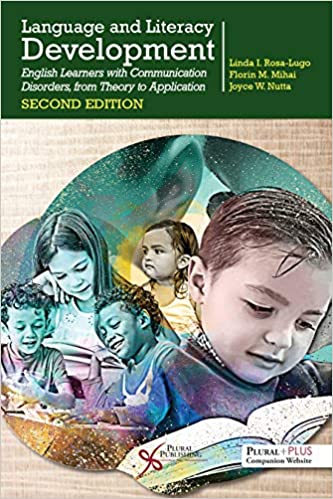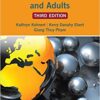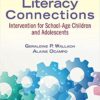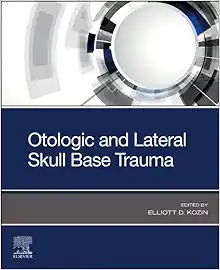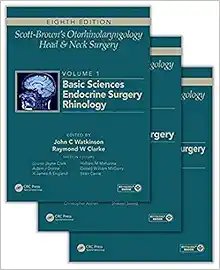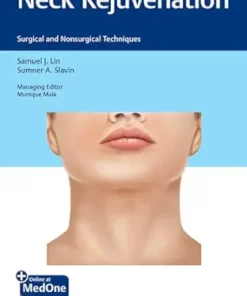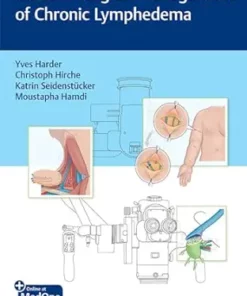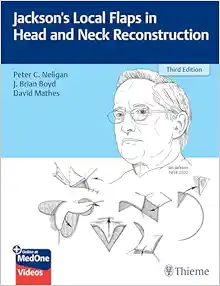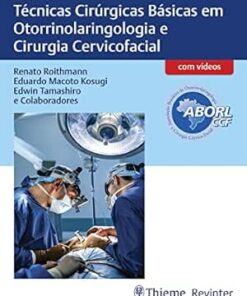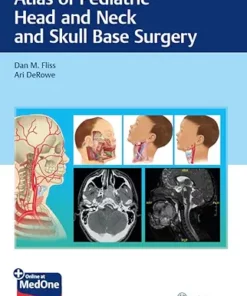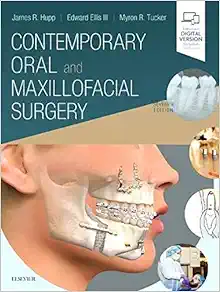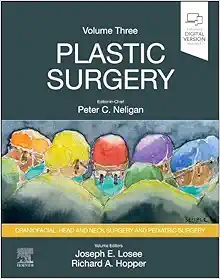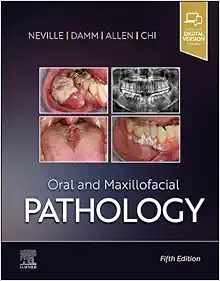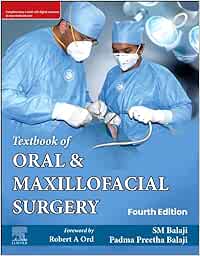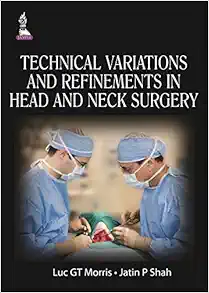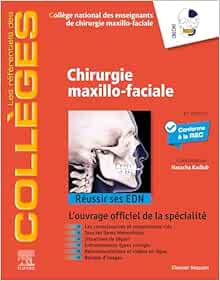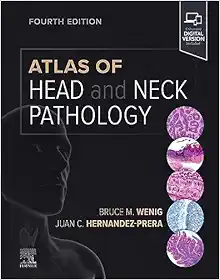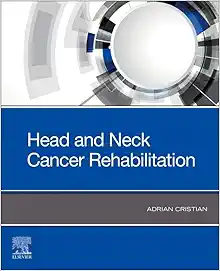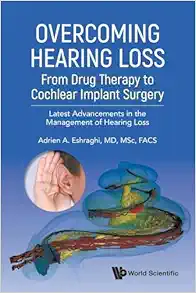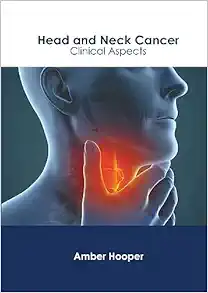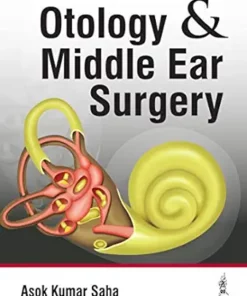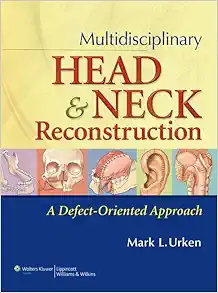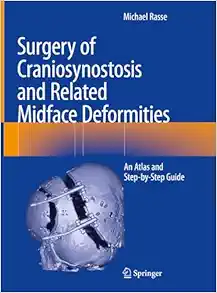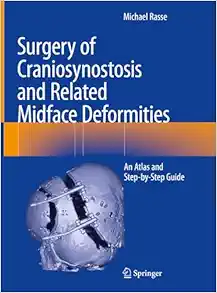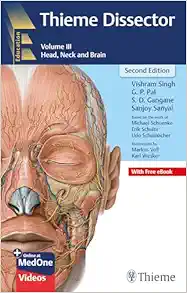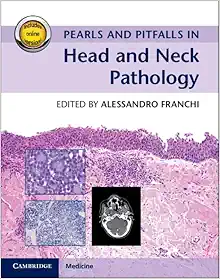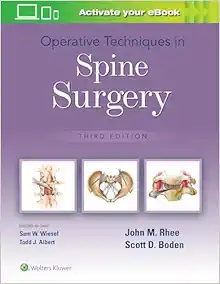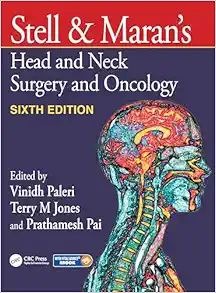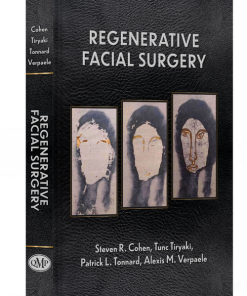Language and Literacy Development: English Learners With Communication Disorders, from Theory to Application (Original PDF from Publisher)
$15
Publisher PDF
File Size = 4.70 MB
- Updated EL and EL with communication disorders demographics and legislation
- An innovative assessment/intervention/monitoring (AIM) framework geared toward language proficiency development and academic content expansion of ELs with communication disorders
- Research-based and proficiency-level appropriate pedagogical interventions and recommendations for implementing effective assessments that support English learners with communication disorders in their language and content growth
- Updated information on commonly used assessments used by speech-language pathologists to identify/determine disability
- Authentic examples of case studies of ELs and ELs with communication disorders that encourage readers to apply the innovative assessment/intervention/monitoring (AIM) framework
- Publisher : Plural Pub Inc; 2nd edition (April 3, 2020)
- Language : English
- Paperback : 432 pages
- ISBN-10 : 1635501539
- ISBN-13 : 978-1635501537
- ISBN-13 : 9781635501537
- eText ISBN: 9781635501551
By Linda I. Rosa-lugo, Florin Mihai, Joyce Nutta
Language and Literacy Development: English Learners with Communication Disorders, From Theory to Application, Second Edition brings you the most useful, up-to-date information on best practices for English learners (ELs) with communication disorders from a variety of backgrounds how to conduct assessment, intervention, and progress monitoring. The first edition of this text gave a comprehensive overview of the theory and practice of serving ELs with communication disorders, and the second edition is expanded to show the nuts and bolts of how to meet ELs’ needs and how professionals can support their success at school.
Continuing the perspective of the first edition, this text emphasizes collaboration between speech-language pathology (SLP) and English for speakers of other languages (ESOL) professionals. To place theory, policies, and best practices in a realistic, relatable context, this text presents engaging, detailed teaching cases that address common issues that SLPs and ESOL specialists encounter. More importantly, it shows how to apply the knowledge and implement the mechanics and practicalities of assessment, intervention, and progress monitoring. The new resources section includes many useful tools and references, such as a case history form for bilingual students, WIDA Can-do Descriptors and Performance Definitions, actual assessment instruments, and a table of intervention types and purposes.
New to the Second Edition:
The primary audience for this text is the school-based speech-language pathologist. It is also intended for all professionals who are responsible for teaching language and literacy skills, such as the ESOL professional, general and special educators, bilingual teachers, reading coaches and school administrators. Language and Literacy Development, Second Edition can also be used as a textbook in academic programs.
Product Details
Related Products
HEAD AND NECK SURGERY & OTOLARYNGOLOGY
Otologic and Lateral Skull Base Trauma (True PDF from Publisher)
HEAD AND NECK SURGERY & OTOLARYNGOLOGY
HEAD AND NECK SURGERY & OTOLARYNGOLOGY
Neck Rejuvenation: Surgical and Nonsurgical Techniques (EPUB)
HEAD AND NECK SURGERY & OTOLARYNGOLOGY
HEAD AND NECK SURGERY & OTOLARYNGOLOGY
Jackson’s Local Flaps in Head and Neck Reconstruction (EPUB)
HEAD AND NECK SURGERY & OTOLARYNGOLOGY
HEAD AND NECK SURGERY & OTOLARYNGOLOGY
Atlas of Pediatric Head and Neck and Skull Base Surgery (EPUB)
HEAD AND NECK SURGERY & OTOLARYNGOLOGY
Contemporary Oral and Maxillofacial Surgery, 7th Edition (EPUB)
HEAD AND NECK SURGERY & OTOLARYNGOLOGY
HEAD AND NECK SURGERY & OTOLARYNGOLOGY
Oral and Maxillofacial Pathology, 5th Edition (True PDF from Publisher)
HEAD AND NECK SURGERY & OTOLARYNGOLOGY
HEAD AND NECK SURGERY & OTOLARYNGOLOGY
Textbook of Oral and Maxillofacial Surgery, 4th Edition (True PDF from Publisher)
HEAD AND NECK SURGERY & OTOLARYNGOLOGY
Technical Variations and Refinements in Head and Neck Surgery (Original PDF from Publisher)
HEAD AND NECK SURGERY & OTOLARYNGOLOGY
Chirurgie Maxillo-Faciale, 6th Edition (True PDF from Publisher)
HEAD AND NECK SURGERY & OTOLARYNGOLOGY
Atlas of Head and Neck Pathology, 4th Edition (True PDF from Publisher)
HEAD AND NECK SURGERY & OTOLARYNGOLOGY
Head and Neck Cancer Rehabilitation (True PDF from Publisher)
HEAD AND NECK SURGERY & OTOLARYNGOLOGY
HEAD AND NECK SURGERY & OTOLARYNGOLOGY
Head and Neck Cancer: Clinical Aspects (Original PDF from Publisher)
HEAD AND NECK SURGERY & OTOLARYNGOLOGY
HEAD AND NECK SURGERY & OTOLARYNGOLOGY
Multidisciplinary Head and Neck Reconstruction: A Defect-Oriented Approach (EPUB + Converted PDF)
HEAD AND NECK SURGERY & OTOLARYNGOLOGY
HEAD AND NECK SURGERY & OTOLARYNGOLOGY
HEAD AND NECK SURGERY & OTOLARYNGOLOGY
Thieme Dissector Volume 3: Head, Neck and Brain, 2nd Edition (Original PDF from Publisher)
HEAD AND NECK SURGERY & OTOLARYNGOLOGY
Pearls and Pitfalls in Head and Neck Pathology (Converted EPUB)
HEAD AND NECK SURGERY & OTOLARYNGOLOGY
2024 Practical Head & Neck Imaging: Mimics and Case-based Review – DocmedED (Videos)
HEAD AND NECK SURGERY & OTOLARYNGOLOGY
Operative Techniques in Spine Surgery, 3rd Edition (Original PDF from Publisher)
HEAD AND NECK SURGERY & OTOLARYNGOLOGY
2024 Multidisciplinary Head and Neck Cancers Symposium onDemand (Videos)
HEAD AND NECK SURGERY & OTOLARYNGOLOGY
Stell & Maran’s Head and Neck Surgery and Oncology, 6th edition (Original PDF from Publisher)
HEAD AND NECK SURGERY & OTOLARYNGOLOGY
HEAD AND NECK SURGERY & OTOLARYNGOLOGY
MAFAC Amsterdam 2023 – Cadaver Dissection Demonstrations & Lectures
HEAD AND NECK SURGERY & OTOLARYNGOLOGY
HEAD AND NECK SURGERY & OTOLARYNGOLOGY
Complex Head and Neck Microvascular Surgery: Comprehensive Management and Perioperative Care PDF
HEAD AND NECK SURGERY & OTOLARYNGOLOGY
Lateral Neck Swellings: Diagnostic and Therapeutic Challenges
HEAD AND NECK SURGERY & OTOLARYNGOLOGY
HEAD AND NECK SURGERY & OTOLARYNGOLOGY
Anatomy of Orofacial Structures: A Comprehensive Approach, 9th Edition
HEAD AND NECK SURGERY & OTOLARYNGOLOGY
HEAD AND NECK SURGERY & OTOLARYNGOLOGY
50 Landmark Papers every Thyroid and Parathyroid Surgeon Should Know
HEAD AND NECK SURGERY & OTOLARYNGOLOGY
Matrix Head and Neck Reconstruction: Scalable Reconstructive Approaches Organized by Defect Location
HEAD AND NECK SURGERY & OTOLARYNGOLOGY
HEAD AND NECK SURGERY & OTOLARYNGOLOGY
HEAD AND NECK SURGERY & OTOLARYNGOLOGY
Basic Guide to Oral and Maxillofacial Surgery (Basic Guide Dentistry Series)
HEAD AND NECK SURGERY & OTOLARYNGOLOGY
HEAD AND NECK SURGERY & OTOLARYNGOLOGY
HEAD AND NECK SURGERY & OTOLARYNGOLOGY
HEAD AND NECK SURGERY & OTOLARYNGOLOGY
HEAD AND NECK SURGERY & OTOLARYNGOLOGY
Otolaryngology: Current Concepts and Techniques in Head and Neck Surgery
HEAD AND NECK SURGERY & OTOLARYNGOLOGY
HEAD AND NECK SURGERY & OTOLARYNGOLOGY
Nanostructures for Oral Medicine (Micro and Nano Technologies)
HEAD AND NECK SURGERY & OTOLARYNGOLOGY
Kurzlehrbuch Hals-Nasen-Ohren-Heilkunde (UNI-MED Science), 4th Edition
HEAD AND NECK SURGERY & OTOLARYNGOLOGY
Postlaryngectomy voice rehabilitation with voice prostheses (UNI-MED Science)
HEAD AND NECK SURGERY & OTOLARYNGOLOGY
HEAD AND NECK SURGERY & OTOLARYNGOLOGY
HEAD AND NECK SURGERY & OTOLARYNGOLOGY
HEAD AND NECK SURGERY & OTOLARYNGOLOGY
HEAD AND NECK SURGERY & OTOLARYNGOLOGY
The Milan System for Reporting Salivary Gland Cytopathology, 2nd Edition
HEAD AND NECK SURGERY & OTOLARYNGOLOGY
HEAD AND NECK SURGERY & OTOLARYNGOLOGY
HEAD AND NECK SURGERY & OTOLARYNGOLOGY
Hair Cell Regeneration (Springer Handbook of Auditory Research, 75)
HEAD AND NECK SURGERY & OTOLARYNGOLOGY
HEAD AND NECK SURGERY & OTOLARYNGOLOGY
Soundscapes: Humans and Their Acoustic Environment (Springer Handbook of Auditory Research, 76)
HEAD AND NECK SURGERY & OTOLARYNGOLOGY
Simulation-Based Learning in Communication Sciences and Disorders: Moving from Theory to Practice
HEAD AND NECK SURGERY & OTOLARYNGOLOGY
Fundamentals of Anatomy and Physiology of Speech, Language, and Hearing
HEAD AND NECK SURGERY & OTOLARYNGOLOGY
HEAD AND NECK SURGERY & OTOLARYNGOLOGY
100 Complications of Otorhinolaryngology & Skull Base Surgery PDF & VIDEO
HEAD AND NECK SURGERY & OTOLARYNGOLOGY
The Art of Body Contouring: After Massive Weight Loss, 2nd edition Original PDF and Video
HEAD AND NECK SURGERY & OTOLARYNGOLOGY
HEAD AND NECK SURGERY & OTOLARYNGOLOGY
2023 Osteocom Hard and Soft Tissue Augmentation 2.0 – Luca De Stavola
HEAD AND NECK SURGERY & OTOLARYNGOLOGY
Sinus Grafting for Implant Reconstruction (Pikos Online MasterClass Series) – Michael A. Pikos
HEAD AND NECK SURGERY & OTOLARYNGOLOGY
Osteocom Full Tilted Implants Prosthetic and Surgical Protocols 2023
HEAD AND NECK SURGERY & OTOLARYNGOLOGY
HEAD AND NECK SURGERY & OTOLARYNGOLOGY
Optimizing Orthognathic Surgery: Diagnosis, Planning, Procedures (Epub & Converted to PDF)
HEAD AND NECK SURGERY & OTOLARYNGOLOGY
HEAD AND NECK SURGERY & OTOLARYNGOLOGY
2023 Classic Lectures in Head & Neck Imaging – A CME Teaching Activity
HEAD AND NECK SURGERY & OTOLARYNGOLOGY
Structure & Preservation Rhinoplasty Conference 2021 Istanbul
HEAD AND NECK SURGERY & OTOLARYNGOLOGY
HEAD AND NECK SURGERY & OTOLARYNGOLOGY
HEAD AND NECK SURGERY & OTOLARYNGOLOGY
HEAD AND NECK SURGERY & OTOLARYNGOLOGY
HEAD AND NECK SURGERY & OTOLARYNGOLOGY
Working with Voice Disorders, 3e (Original PDF from Publisher)
HEAD AND NECK SURGERY & OTOLARYNGOLOGY
Principles and Practices in Augmentative and Alternative Communication (Original PDF from Publisher)
HEAD AND NECK SURGERY & OTOLARYNGOLOGY
HEAD AND NECK SURGERY & OTOLARYNGOLOGY
HEAD AND NECK SURGERY & OTOLARYNGOLOGY
Jaypee’s Video Atlas of Operative Otorhinolaryngology and Head & Neck Surgery (Videos Only)
HEAD AND NECK SURGERY & OTOLARYNGOLOGY
Ear, Nose and Throat Simplified, 3rd edition (Original PDF from Publisher)
HEAD AND NECK SURGERY & OTOLARYNGOLOGY
ORL: Réussir son DFASM – Connaissances clés, 5th edition (Original PDF from Publisher)
HEAD AND NECK SURGERY & OTOLARYNGOLOGY
HEAD AND NECK SURGERY & OTOLARYNGOLOGY
Invasive Skull Base Mucormycosis New Perspectives (Original PDF from Publisher+Videos)
HEAD AND NECK SURGERY & OTOLARYNGOLOGY
Atlas of Facial Nerve Surgeries and Reanimation Procedures Original PDF
HEAD AND NECK SURGERY & OTOLARYNGOLOGY
Non-Surgical Rhinoplasty (The PRIME Series) (Original PDF from Publisher)
HEAD AND NECK SURGERY & OTOLARYNGOLOGY
Rinologia: Master Techniques In Otolaryngology – Head And Neck Surgery (Original PDF from Publisher)
HEAD AND NECK SURGERY & OTOLARYNGOLOGY
Secrets: Otorrinolaringologia, 4th Edition (Original PDF from Publisher)
HEAD AND NECK SURGERY & OTOLARYNGOLOGY
Otorrinolaringologia: Manual Prático em Cores (Original PDF from Publisher)
HEAD AND NECK SURGERY & OTOLARYNGOLOGY
HEAD AND NECK SURGERY & OTOLARYNGOLOGY
Current Opinion in Otolaryngology & Head and Neck Surgery 2022 Full Archives (True PDF)
HEAD AND NECK SURGERY & OTOLARYNGOLOGY
HEAD AND NECK SURGERY & OTOLARYNGOLOGY
Pediatric Otolaryngology: Practical Clinical Management,1st edition (EPUB)
HEAD AND NECK SURGERY & OTOLARYNGOLOGY
Color Atlas of Endo-Otoscopy: Examination-Diagnosis-Treatment, 1st edition (EPUB)
HEAD AND NECK SURGERY & OTOLARYNGOLOGY
HEAD AND NECK SURGERY & OTOLARYNGOLOGY
Manual of Eye, Ear, Nose, and Throat Emergencies (Original PDF from Publisher)

